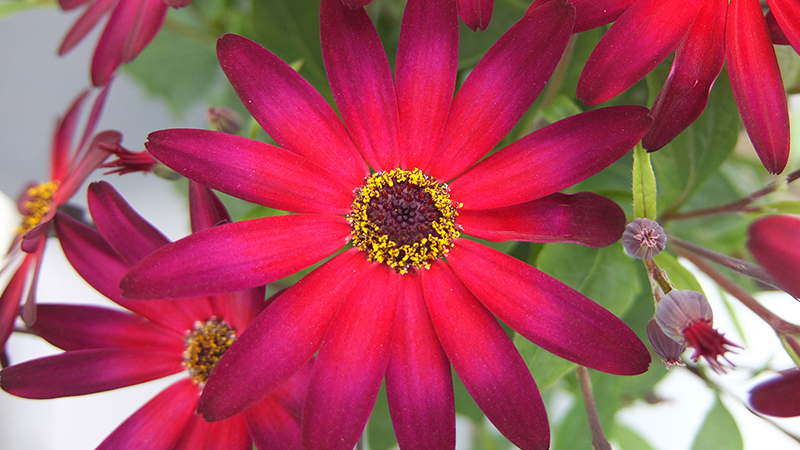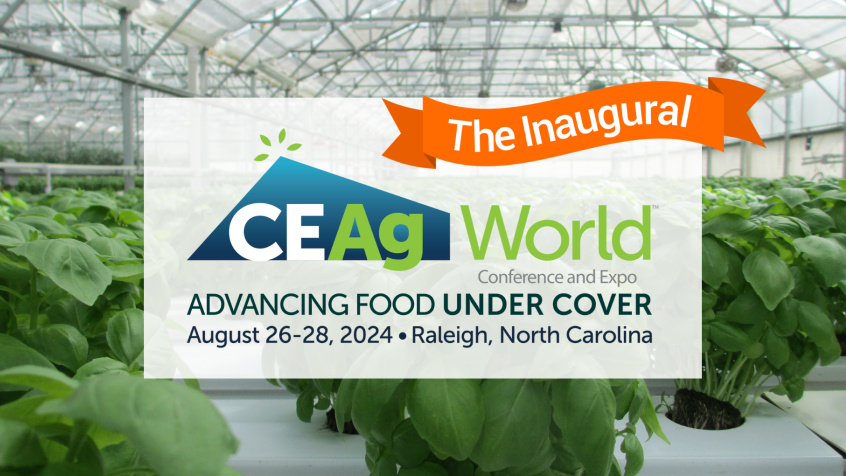A Sustainable Greenhouse And Nursery
The concept of “going green” may be a fairly recent phenomenon, but it is something Bordine Nursery in Michigan has been practicing for more than 10 years. Bordine Nursery is known for its purple signage and marketing and recently added a section to its Web site called “Purple Goes Green.” The section explains the many ways in which the nursery is using environmentally-friendly practices.
Co-owner Calvin Bordine says that even though the site touts the store’s green practices, he does not consider what they do to be a movement. “There was never a sit-down meeting to say, ‘from this day forward …'” he says. “It’s just trying to do what makes sense. It’s something we’ve been working on for over 10 years. It’s now just become very trendy.”
Bordine adds that he has good employees that also come up with suggestions, and he tours other areas for ideas. “We like to travel and look at other people to figure out what we can take home from what others are doing. It’s a lot of little ideas from all over.”
The Biomass Boiler
In February, the nursery installed a biomass boiler at its Grand Blanc growing facility. This investment led Bordine to the decision of adding a green section to the Web site. “With (the biomass boiler) being such a large investment, that was a time to stick a little thing on the Web site,” he says.
Since a majority of the total natural gas used for the growing facility and retail centers lies in production and growing, Bordine says they are doing everything they can to curb natural gas costs. The biomass boiler burns wood chips instead of natural gas to heat water, although natural gas is still used as a backup. A 200,000-gallon water storage tank is used to store heat during the day, so there is twice as much heat that can be used overnight.
Bordine adds that they will make any changes they can to get more of the growing into the area that uses water heat from the biomass. “It’s kind of a work in progress,” he says. “This next winter will be our first full winter with it, so we can really utilize that space in the fall and winter when we grow all the poinsettias in that space.”
Bordine Nursery also sells plants wholesale to other growers and can quote them a price for any point in the growing period. Bordine points to poinsettias as an example. “We can sell them at any stage of a poinsettia, and we’ll be able to give them a price by the week of how much the poinsettia will cost,” he says. “They can use that to decide if they’re going to grow poinsettias or just buy them in.”
Other Green Technologies
In addition to the biomass boiler, Bordine’s has implemented several other sustainable technologies, including a flood floor range in its greenhouse, where plants are grown on a concrete floor. “The floor is sloped slightly, and the irrigation system is built right into the floor, so the water pumped up through the floor waters the plants and then drains down,” Bordine says.
Water is stored in four 10,000-gallon cisterns, and in just five minutes, approximately 2,500 gallons of water fills a zone. Twenty to 25 percent of the water is taken by plants; the rest flows back to the water station, where it is recycled and used later. The flood floor keeps foliage dry and reduces the use of fungicide. The system is computer-controlled, and fertilizer can be added. There is no runoff because 100 percent of the fertilizer and water are used.
Automated watering booms also help conserve water. These booms can be programmed to only water or fertilize specific plants, skipping over those that don’t need it. In addition, less water evaporates because the water is sprinkled only inches above them.
Another way in which water is conserved is in the nursery’s retention pond. This 10 million-gallon pond captures rain water, which is pumped for use on trees, shrubs, roses and small fruits. Runoff from those areas drains back into the pond.
The nursery also has invested in reusable plug trays. While the reusable trays cost more, less plastic is used, and some of the trays are used up to three times a year. A sterilizing machine cleans the trays after each use.
Last but not least, heat retention curtains reduce electricity by providing shade, thus reducing exhaust fan usage. About 35 percent in heating costs are saved each year with this type of curtain.
Bordine says that if nursery owners want to become more green, they should tour other greenhouses and go to trade shows. He recommends OFA as a starting point. “There’s pretty much everybody there,” he says. “If you ever want to look into a product, it’s there.”
Bordine says growers need to go out and search for ideas on how to be green and deal with high heating costs. “We are in a period of accelerated change, and everybody has to accept that,” he says. “I think those that do it well are going to be around 25 years from now.”
Allison Bray is a freelance writer based in Painesville, Ohio.









